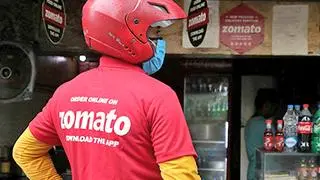After growing at 30-80 per cent post-Covid (depending on the segment and location), demand in the hospitality industry is expected to settle down to an over 10 per cent steady growth rate with higher occupancies and room rates. The supply is, however, seen muted for the next 4-5 years at least. “There is a strong foundation of travel, regular sustainable travel, that is happening in the country says, Sanjay Sethi, Chief Executive Officer of Chalet Hotels. He feels the current boom is not a function of individual events, such as the G20 or the forthcoming cricket World Cup, but is driven by a genuine need for travel. Chalet Hotels is a niche hotel chain that caters primarily to corporate travellers and meetings and conferences (MICE). It has properties in major gateway cities such as Mumbai, Pune, Hyderabad, and Bengaluru, and a new hotel is coming up at Delhi Airport. With about 2800 keys at the end of June it expects to add 88 keys this year and by FY26 is aiming for over 3,700 keys. Excerpts:
How do you explain the current boom in travel — is this driven by the G20 conclave and the forthcoming cricket World Cup?
Demand does not depend on individual events. There is a strong foundation of travel, regular sustainable travel, which is happening in the country. In the last 3-4 quarters, we have seen this strength; quarter-on-quarter we’ve seen this trend, leaving aside the annual seasonal trends, we’ve seen improvement happening across the business and pan-India. The industry is growing at 30-35 per cent, which is a significant growth. In some quarters we’ve grown 50-80 per cent also.
There is a mismatch between demand and supply in the hospitality sector, isn’t it and that is driving up rates?
India had this challenge for the last five or six years of very muted supply-side growth. The number of new rooms and hotels getting added to the branded space in India has been extremely small and Covid didn’t help because some projects that were either planned or under way slowed down or stopped altogether. As we know, Covid hit the demand side very hard for two-and-a-half years and, therefore, the industry had a very troubled time. As we started coming out of it, travel took everyone by surprise. The strength of travel indicated to everyone that the travel industry in India is very resilient. If anything, it has come back stronger than it was in the pre-Covid period. Some of them, I think incorrectly, called it revenge travel, rebound travel. I really don’t agree that rebound travel would have lasted more than a couple of months. The industry has only improved since then, which indicates a very strong foundation to help us grow.
How about the supply side?
The supply side is going to remain muted for the next four years, which is quite a long time, and demand is growing. From here onwards, it is going to be 10 per cent, maybe even higher. High occupancies are in place and what this means is that rates will continue to go up, and we expect double-digit rate growth for the next couple of years at least. Business travel rates will continue to grow in double-digits, and leisure will probably grow at inflation rates. There is still headroom for the rates to go up, and it will sustain for the foreseeable future of 4-5 years.
We are still undersupplied as a country, and we are still very cheap compared to the rest of the world.
How are your inventory additions coming along?
This year we commissioned a new hotel in Hyderabad with 168 rooms. We are on the verge of opening another 88-room hotel in Pune, and including that we have around 1,000 rooms under development.
What is your expansion strategy? Are you looking at any new geographies?
We were missing in the northern part of the country, so we signed the deal with Delhi Airport for a 375-room hotel. To some extent, we have covered that gap. It will take some time to complete, it should be ready in the third quarter of FY26. We have covered Pune, we have covered Lonavla, which is a leisure destination. Rest of the additions are in the six cities that we are present in. We are keen on doing something in Goa and Chennai.
Would you be focussing on pricing or occupancy?
While we don’t favour one or the other, portfolio-wide occupancy is in the 70 per cent range. Weekly occupancy is almost 100 per cent for us. From Friday to Monday, we fill with an occupancy strategy, and from Monday to Thursday the strategy would be to increase the rate. That’s the revenue management tactic as things stand.







Comments
Comments have to be in English, and in full sentences. They cannot be abusive or personal. Please abide by our community guidelines for posting your comments.
We have migrated to a new commenting platform. If you are already a registered user of TheHindu Businessline and logged in, you may continue to engage with our articles. If you do not have an account please register and login to post comments. Users can access their older comments by logging into their accounts on Vuukle.